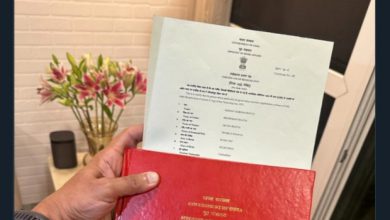SBI posts Q4 loss of Rs 7,718 crore as provisions more than double

The country’s largest bank State Bank of India on Tuesday reported a second consecutive net loss of Rs 7,718 crore for the March quarter, primarily due to a surge in provisions and bad loans.
This was also the second highest quarterly loss figure reported by any bank following Punjab National Bank’s Rs 13,417 crore loss reported for the March quarter last week.
A Reuters’ poll had estimated the bank to report a loss of Rs 1,270.5 crore, as against a net profit of Rs 2,814.82 crore reported in the same quarter last year. For the December 2017 ended quarter, SBI had reported a loss of Rs 2,416 crore.
Provisions (and contingencies) surged to Rs 28,096 crore during the reporting quarter, more than twice the amount reported in the corresponding quarter last year at Rs 11,740 crore and Rs 18,876 crore in the quarter ending December 2017.
The rise in provisions was mainly because the bank had to provide more for bad loans (Rs 24,080 crore), the losses (Rs 6,000 crore) it incurred on trading and mark-to-market losses due to a rise in bond yields.
Other factors that weighed on the lender’s bottom line were a revision in wages and an enhancement of the gratuity ceiling.
“Our bank has consciously chosen not to avail the mark-to-market loss dispensation (to spread losses across four quarters) and taken it all at once as we see bond yields rising further,” the bank’s Chairman Rajnish Kumar said at the post-results press conference.
The Chairman said that SBI has provided for 56 percent of its exposure to the first 12 companies referred to the National Company Law Tribunal (NCLT) facing insolvency after referred by the Reserve Bank of India (RBI) last year, but said he does not expect the loss to exceed 50-52 percent of the total exposure.
He added that the bank’s provision coverage ratio was 5 percent higher year on year at 66.17 percent, and is now among the best in the industry.
“As far as the recognition of NPAs is concerned, that has been completed and we are fully compliant with the framework issued by RBI on February 12,” Kumar said.
NPAs
SBI’s gross non-performing assets (NPAs), as a share of its loans, grew 56 basis points sequentially to 10.91 percent at the end of March. This was over 400 basis points higher than at the end of March last year (9.11 percent).
Net NPAs as a percentage of the bank’s loan book came in at 5.73 percent, 12 basis points higher than at the end of the December quarter (5.61 percent), and over 200 basis points higher than at the end of March last year (5.19 percent).
In absolute terms, gross NPAs rose to Rs 2.23 lakh crore from Rs 1.99 lakh crore at the end of December.
Fresh slippages, which reflect new loans turning bad, rose to Rs 33,670 crore compared to Rs 25,836 crore in the previous quarter.
The bank’s watchlist (potential bad loans list) has increased to Rs 25,802 crore, from around Rs 10,340 crore earlier, as it now includes accounts that fall under the SMA 1 and 2 (special mentioned accounts) category, Kumar said.
For a loan to be categorised as SMA 1 and 2, the repayment of a loan has to be overdue by 30 days and 60 days, respectively.
Lalitabh Shrivastawa, AVP Research, Sharekhan, “Notwithstanding the high slippages during the quarter (expected due to regulatory changes) which resulted in SBI posting a Loss, the outlook appears to be improving. The watch-list, about 1.3 percent of total advances, now contains all corporate SMA-2 and stressed SMA-1. Going forward, we believe that the bulk of pain in terms of NPA recognition is behind for SBI…Hence, though FY19E credit cost may be elevated, they would be significantly lesser than FY18.”
Interest income and Margins
SBI’s net interest income (NII), the difference between interest earned and interest paid, grew 10.53 percent year on year to Rs 19,974.28 crore. The Reuters poll had estimated NII to come in at Rs 19,286 crore.
The bank’s domestic net interest margin (NIM) declined 26 basis points year on year to 2.67 percent. However, it was marginally higher than the 2.61 percent reported for the December quarter.
The lender’s non-interest income improved 2.23 percent to Rs 12,222 crore, backed by a 13 percent rise in fee income.
“Improvements in NIM will come definitely as we have now provided for everything,” Kumar said.
Loan and Deposit growth
Total advances rose 4.9 percent driven by loans to services industry and retail loans. Auto loans rose 15 percent while home loans grew 13 percent. Advances to large, mid-sized corporates and SMEs inched up by 1.8 percent.
Deposits rose 4.68 percent. The ratio of low-cost current account and savings account (CASA) deposits improved to 45.68 percent from 44.40 percent in March last year.
The bank will target credit growth of 10 percent in the current financial year and growth in deposits at nine percent, focusing on CASA growth, Kumar told reporters.
Outlook
The bank provided a set of projections for FY20 in terms of credit growth (greater than 12 percent), NIM (more than 3 percent) and gross NPA ratio (less than 6 percent).
“We have put the past behind us even as the last three years have been challenging. Today, what you see is a stronger State Bank (of India) than two years ago,” the SBI chief said.
He added that, “If the last year was the year of disappointment, this year is the year of hope, then FY20 will be the year of happiness.”
Post results and the Chairman’s “hope”ful commentary led SBI shares to zoom over six percent to Rs 259.9 apiece. SBI stock ended higher by 3.69 percent higher at 254.15, while the benchmark BSE Sensex ended almost flat (0.10 percent) higher at 34,651.24.




